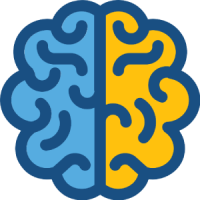
Carl Gustav Jung
A Complete Guide to Cognitive Functions
This Guide provides a comprehensive overview of the influential theory of cognitive functions formulated by Carl Jung in the early 20th century.
Jung proposed that there are four core psychological functions - Thinking, Feeling, Sensing and Intuition - that can be expressed in an extroverted or introverted attitude.
The interplay between these functions and their order of preference comprise an individual's personality type according to Jung. This seminal theory led to the development of various personality typologies, like the Myers-Briggs Type Indicator, that are still widely used today.
The below content first explores the history and explanations of Jung's cognitive functions. It then delves into the different types of functions, how they combine into personality types, and their applications.
Finally, it covers identifying dominant functions, the value of this theory for personal growth, criticisms of the theory, and the influence on modern psychology. For anyone interested in understanding the basis of personality typologies and Jung's perspective on how differences in information processing shape personality, this overview provides a comprehensive foundation.
The Functions
Carl Gustav Jung, a Swiss psychiatrist and psychoanalyst who founded analytical psychology, is credited with formulating the theory of cognitive functions, a key aspect of which was the understanding of personality.
A History of Jung's Cognitive Functions:
_cover.png)
Jung's groundbreaking work happened in the early 20th century. In his 1921 book "Psychological Types," he laid out his theory of psychological types, which was intended to reconcile the differences between various schools of psychoanalytic thought and facilitate the understanding of the human psyche in a more comprehensive way.
Jung observed that human behavior was not random, but instead followed identifiable patterns. These patterns emerged, he believed, from basic cognitive functions that were universal to all people. Furthermore, he noticed that while all individuals seemed to possess these cognitive functions, their preference or natural inclination for using each function varied widely from person to person.

Jung's Cognitive Functions Explained:
According to Jung, there are four primary types of cognitive functions:
-
Thinking: This function is about making decisions based on logical reasoning. It's not about intelligence or the process of thought, but the preference for making decisions based on impersonal, objective logic.
-
Feeling: This function, contrary to what the name suggests, isn't about emotion. It's about making decisions based on personal values and the impact on other people. The emphasis is on harmony, relationships, and societal values.
-
Sensation: This function is about obtaining concrete, tangible data from the environment. It's about what can be seen, touched, smelled, tasted, and heard.
-
Intuition: This function is about seeing possibilities, understanding patterns, and anticipating future events. It often appears as a hunch or a feeling of what could be.
Each of these functions can be expressed in an extraverted or introverted form, leading to a total of eight distinct cognitive functions.

Jung's Cognitive Function Types:
Extraverted forms of the functions focus on the external world and the object, while introverted forms focus on the subject and internal world. Here's how they manifest:
-
Extraverted Thinking (Te):
This is the function used by people who value efficiency and effectiveness in their interactions with the world. They tend to make logical, objective decisions and prefer to organize and categorize things. A person with dominant Te might be drawn to roles where they can optimize processes, solve practical problems, or lead teams towards concrete goals.
-
Introverted Thinking (Ti):
People who use Ti as a dominant function often strive for precision in their thoughts. They value consistency and logic, and they often spend a lot of time understanding systems and theories. A Ti user could be drawn to roles that involve problem-solving, analysis, or deep understanding, such as engineering or theoretical sciences.
-
Extraverted Feeling (Fe):
Fe users prioritize harmony and consensus in group settings. They're often attuned to the emotional needs of others and strive to meet them. A person with dominant Fe might be drawn to roles where they can help others, resolve conflicts, or build relationships, such as social work, customer service, or diplomacy.
-
Introverted Feeling (Fi):
Fi users have a rich inner world of values, emotions, and ideals. They often strive for authenticity and want to live in alignment with their values. A person with dominant Fi might be drawn to roles that align with their personal values and allow them to express their individuality, such as artists, writers, or activists.
-
Extraverted Sensation (Se):
Se users are often attuned to the present moment and the sensory experience it brings. They might love action, novelty, and physical engagement with the world. A person with dominant Se might be drawn to roles that involve direct sensory engagement or exploration, such as athletics, performing arts, or travel.
-
Introverted Sensation (Si):
Si users often have a keen memory for facts and details. They tend to compare present experiences to past ones and strive for stability and predictability. A person with dominant Si might be drawn to roles that involve detail, routine, or precedent, such as accounting, law, or administrative work.
-
Extraverted Intuition (Ne):
Ne users love to explore possibilities and see potential everywhere. They can often make connections between seemingly unrelated things. A person with dominant Ne might be drawn to roles that involve creativity, innovation, or brainstorming, such as entrepreneurship, advertising, or research.
-
Introverted Intuition (Ni):
Ni users are often focused on understanding the underlying meaning and patterns of the world. They're future-oriented and can be quite visionary. A person with dominant Ni might be drawn to roles that involve strategy, foresight, or understanding complex systems, such as consulting, psychology, or academia.
Each person, according to Jung, has a dominant function, which they prefer and use most frequently, an auxiliary function, which supports the dominant function, a tertiary function, which is less developed but still accessible, and an inferior function, which is least consciously accessible and often manifests under stress or in unfamiliar situations.
Understanding these functions and their manifestation in individuals led to the development of many modern personality typology systems, including the Myers-Briggs Type Indicator (MBTI), which assigns a four-letter type based on a person's dominant cognitive processes.
However, it's crucial to understand that these are just theories and models. As with any psychological theory, it's a simplification of complex human behavior and doesn't capture the entirety of an individual's personality.

The Interplay of Cognitive Functions and Personality Types:
One of Jung's central ideas was that people vary in their preferences for cognitive functions, and these preferences are quite stable over time. These preferences can be identified, leading to recognizable personality patterns.
As mentioned earlier, each person has a dominant, auxiliary, tertiary, and inferior function. The dominant function is the individual's most preferred function, the one they feel most comfortable with. The auxiliary function supports the dominant function and is also well developed, though not as strong as the dominant function. The tertiary function is less developed, and the inferior function is the least developed and most unconscious.

Function Stacks and Personality Types:
In the Myers-Briggs Type Indicator (MBTI®), which is an extrapolation of Jung's theories, this combination of cognitive functions is known as a 'function stack,' and it is this stack that determines a person's MBTI personality type.
There are 16 MBTI personality types, each defined by a unique function stack. The stack is made up of one function from each of the four pairs (Thinking-Feeling, Sensing-Intuition, Extraverted-Introverted), and they are ordered in terms of the individual's preference for them (dominant, auxiliary, tertiary, inferior).
For example, an INTP (Introverted, Intuitive, Thinking, Perceiving) has a function stack as follows:
- Dominant: Introverted Thinking (Ti)
- Auxiliary: Extraverted Intuition (Ne)
- Tertiary: Introverted Sensing (Si)
- Inferior: Extraverted Feeling (Fe)
Each type uses both extraverted and introverted functions, as well as both judging (Thinking, Feeling) and perceiving (Sensing, Intuition) functions. The MBTI type tells us which of these functions the person is most comfortable with and tends to use more often.

Application of Jung's Cognitive Functions:
Jung's cognitive functions have been used to understand and explain individual differences in personality, decision making, learning, and problem-solving. These functions provide a way of categorizing and understanding how different people might approach the same situation in different ways.
For example, a person with a dominant function of Extraverted Thinking might approach a problem by trying to logically organize and structure the information, focusing on efficiency and productivity. On the other hand, a person with a dominant function of Introverted Feeling might approach the same problem by examining how it aligns with their internal value system and making a decision based on authenticity.
It's important to remember that everyone uses all eight cognitive functions to some degree, and no function is better or worse than another. Each has its strengths and weaknesses, and different functions may be more or less effective in different situations.

Identifying Dominant Cognitive Function:
Identifying the dominant cognitive function in an individual can be a complex process, often requiring careful observation and sometimes self-reflection (if you're trying to identify your own dominant function). Here are some ways you might be able to discern it:
- Think about how you (or the person) make decisions: Do they tend to rely more on logical analysis (Thinking) or personal values (Feeling)?
- Consider the way they gather information: Do they prefer to focus on concrete facts and sensory data (Sensing), or do they gravitate towards patterns and possibilities (Intuition)?
- Pay attention to their orientation: Are they more focused on the external world and take action based on objective information (Extraverted), or do they tend to focus more on their inner world of thoughts and feelings (Introverted)?
It's important to note that the dominant function is thought to be the one that comes most naturally and effortlessly. It's the default way of interacting with the world.

Understanding one's cognitive functions and how they shape one's interactions with the world can be incredibly beneficial for personal growth and development.
-
Self-awareness and self-understanding: Understanding your cognitive functions can provide insight into why you think, feel, and behave the way you do. This can promote greater self-understanding and self-acceptance.
-
Improved interpersonal relationships: Understanding that other people may have different cognitive function preferences can lead to greater empathy and improved communication. It can help you appreciate the diverse ways of thinking and perceiving the world.
-
Career guidance: Knowing your cognitive functions can provide insights into what kinds of jobs and tasks you might enjoy or excel at. It can help guide career choices and professional development.
-
Personal growth: Recognizing your less developed functions can provide a roadmap for personal growth. By consciously working to improve these areas, you can become a more balanced and well-rounded individual.
It's crucial to remember that while understanding cognitive functions can be enlightening, it's not a deterministic or exhaustive description of your capabilities or potential. People can and do adapt, learn, and grow beyond their preferences.

Criticisms and Limitations of Jung's Cognitive Function Theory:
While Jung's cognitive function theory is widely used and has influenced many psychological typologies, it's not without its criticisms and limitations:
-
Lack of Empirical Evidence: One of the most significant criticisms of Jung's cognitive functions theory is the lack of empirical evidence to support it. Many of the concepts, such as the existence of cognitive functions and their dichotomous nature (e.g., extraverted vs. introverted), are hard to measure and test scientifically.
-
Over-simplification: While the cognitive functions provide a simplified way to understand complex human behavior, they may oversimplify the nuances of personality. Humans are dynamic and adaptable, and a person's behavior can change depending on the situation.
-
Potential for Stereotyping: The categorization of individuals into specific types based on their dominant cognitive function can lead to stereotyping and limit the understanding of individual differences. People are more complex than any personality type can encapsulate.
-
Inconsistent Results: Tools developed based on Jung's theories, such as the Myers-Briggs Type Indicator (MBTI), often lack reliability, meaning that individuals may get different results when taking the test at different times.

Influence on Modern Psychology:
Despite the criticisms, Jung's cognitive function theory has profoundly influenced modern psychology:
-
Personality Typologies: The most obvious influence is the development of personality typologies, such as the MBTI and the Socionics. These typologies are used in a variety of contexts, from career counseling to relationship advice.
-
Understanding Cognitive Processes: Jung's cognitive functions have contributed to our understanding of cognitive processes and decision-making. They have informed various aspects of psychology, including cognitive, social, and personality psychology.
-
Personal Development and Self-Understanding: The cognitive functions provide a framework for self-understanding and personal development. They have been used in coaching, therapy, and personal development to help individuals understand their strengths and areas for growth.
-
Organizational Psychology: Many organizations use personality typologies derived from Jung's theories, such as the MBTI, for team building, leadership development, and to improve workplace dynamics.
In conclusion, while Jung's cognitive function theory has its limitations and has faced criticisms, it continues to be a valuable tool for understanding personality differences and cognitive processes. It has had a lasting impact on psychology and continues to be used and explored in a variety of contexts.

Sign up today!
See how we apply all of our tools to
give you the best possible chances of
finding someone who truly vibes with you.
|

Ben Baker, CEO
About the Author
Ben has practiced Astrology for over 35 years and is a certified Cognitive Behavioral Therapist (CBT) Practitioner. Ben holds 11 patents for the core functions that all dating sites now use today. See Ben's Bio for more info.
|











_cover.png)











Comments